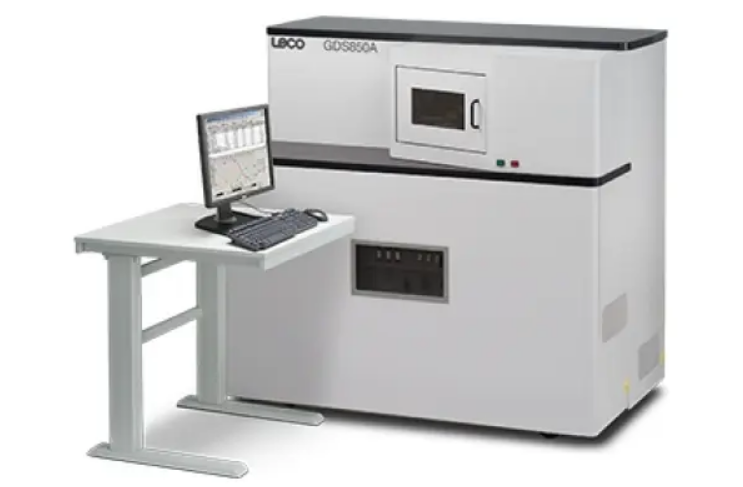GDS850 Glow Discharge Spectrometer
Glow Discharge Atomic Emission Spectrometer
For a variety of metal materials, our Glow Discharge Atomic Emission Spectrometers enable precise bulk analysis and quantitative depth profiling. The GDS850 has a spectral range of 120 to 800 nm and can be adjusted with up to 58 channels, allowing you to create a unique solution for your laboratory.

Features
- Uniform sputtering and the nonthermal sample process is well-suited for difficult applications
- Separation of sputtering and excitation
- Linear calibration curves with wide dynamic range
- Minimized self-absorption and material re-deposition
- Excitation of almost exclusively atom lines
- Fewer and narrower emission lines reduce interference
- Freedom from metallurgical history
- Fewer standards required for calibration
- Low argon gas consumption
- Automatic cleaning between samples saves you time
Applications
The GDS850 is ideal for the following applications: steel, iron (including as-cast), aluminum, copper, zinc, nickel, cobalt, tungsten, and titanium materials.
Theory of Operation
Other methods may preferentially attack the sample surface and do not always provide a representative sample to analyze. With glow discharge, sample material is uniformly sputtered from the surface. The nonthermal nature of the sampling process makes this an excellent technique for difficult applications.
Glow Discharge Spectrometry utilizes a low-pressure, non-thermal process in which material is uniformly sputtered from the sample surface by a stream of argon ions. The sputtered material is then atomized and excited in a low-pressure plasma discharge, away from the sample surface. The GDS850 focuses this technology to enhance your lab’s performance for both process control and research/development investigations. It delivers highly accurate bulk analysis as well as compositional depth profiling for coatings analysis and surface treatments.
Accessories
GI-SAXS/GI-WAXS
Grazing-Incidence SAXS (GI-SAXS) is a unique tool for characterizing the nanostructural features of materials at surface and interface.
Tensile
DSC is widely used for the determination of thermodynamical states (cf. phase transition, melt/crystallization). Simultaneous measurement of SAXS(WAXS) and DSC is configured.
Differential Scanning Calorimetry (DSC)
In-situ SAXS and WAXS measurement is a powerful tool for investigating the dynamic behaviors of polymer morphology, phase transition during drawing.
Temperature and humidity
Temperature and humidity control unit is a key device for advanced functional materials in the fuel cell, etc.
